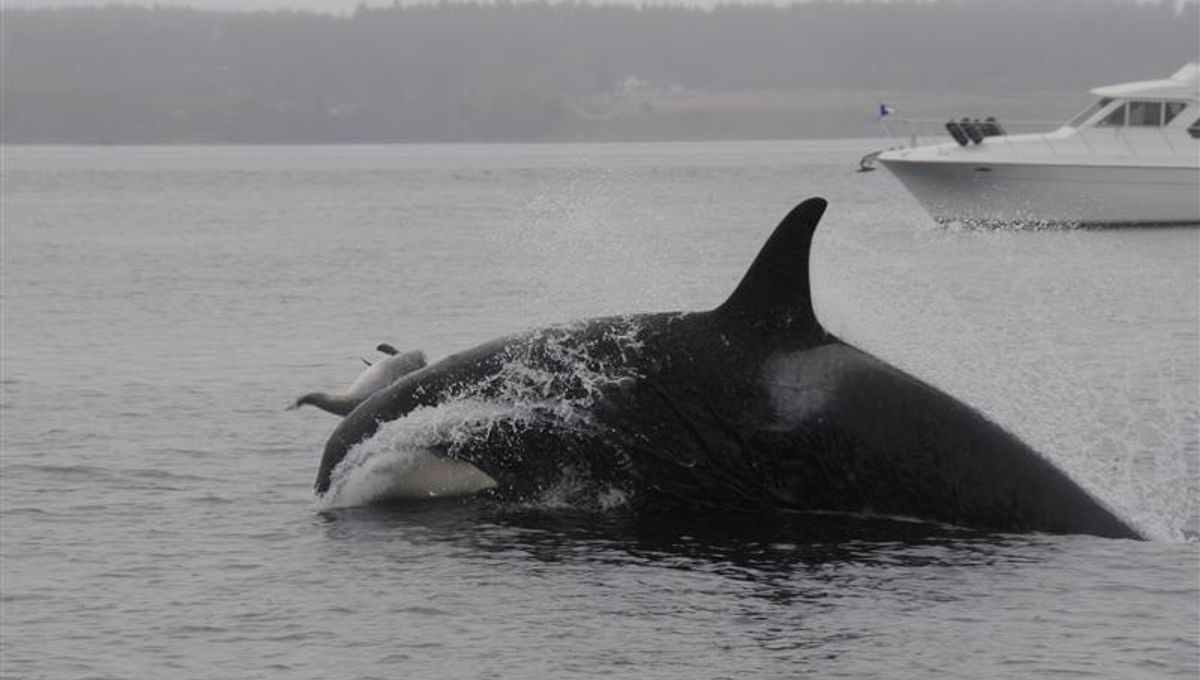
It is not always easy to understand animal behavior, especially when it involves other species. For decades, researchers have observed orca (killer whales) attacking and even killing porpoises in the Pacific Northwest. But bafflingly, these expert hunters don’t eat their victims. So what’s going on here?
Southern Resident orca are a genetically and culturally distinct population of orcas that live in the Pacific Northwest. They are an endangered group, numbering around 75 individuals spread among three pods. The lives of these orcas are closely tied to those of the chinook salmon, which are also endangered. As you can expect, if the salmon disappear, so too will the orcas. But despite their preference for salmon, these whales are known to attack and kill other smaller marine mammals without eating them.
To better understand this unusual behavior, an international team of researchers examined more than 60 years of recorded interactions between Southern Resident orca and porpoises in the Salish Sea, a marginal sea located in the province of British Columbia and the US state of Washington. These attacks have been observed for a long time, but it seems the behavior is becoming more frequent and spreading among the orca population.
“Killer whales are incredibly complex and intelligent animals”, Sarah Teman of the SeaDoc Society, part of the UC Davis School of Veterinary Medicine, explained in a statement. “We found that porpoise-harassing behavior has been passed on through generations and across social groupings. It’s an amazing example of killer whale culture.”
“Still, we don’t expect the Southern Resident killer whales to start eating porpoises. The culture of eating salmon is deeply ingrained in Southern Resident society. These whales need healthy salmon populations to survive.”
“I am frequently asked, why don’t the Southern Residents just eat seals or porpoises instead?” Deborah Giles of Wild Orca added. “It’s because fish-eating killer whales have a completely different ecology and culture from orcas that eat marine mammals—even though the two populations live in the same waters. So we must conclude that their interactions with porpoises serve a different purpose, but this purpose has only been speculation until now.”
According to Giles and her colleagues’ work, the orca may be attacking the porpoise as a form of social play. As with other intelligent creatures, play is an important bonding behavior. It is possible these large animals may be attacking the smaller mammals as a way to reinforce social cohesion.
Similarly, the behavior could represent hunting practice, whereby the orcas are honing their teamwork and coordination skills for hunting salmon. In this situation, the porpoises could serve as “moving targets” to practice predatory techniques on. Unfortunately, it is not easy to tell the difference between play and hunting in these species.
Finally, the behavior could be a manifestation of “mismothering” where the orcas see the smaller porpoises as weaker or ill and so in need of care. Female orcas have been known to carry the bodies of their deceased calves in similar ways.
“Mismothering behavior—also known as ‘displaced epimeletic behavior’ to scientists—might be due to their limited opportunities to care for young,” Giles explained. “Our research has shown that due to malnutrition, nearly 70% of Southern Resident killer whale pregnancies have resulted in miscarriages or calves that died right away after birth.”
This work highlights the need for the conservation of salmon populations in the area as well as the orcas’ entire hunting range. The threat to the salmon’s future is not just a threat to a single species, but an entire ecosystem.
The study was published in Marine Mammal Science.
Source Link: Why Do Killer Whales Attack And Kill Porpoises Without Eating Them?